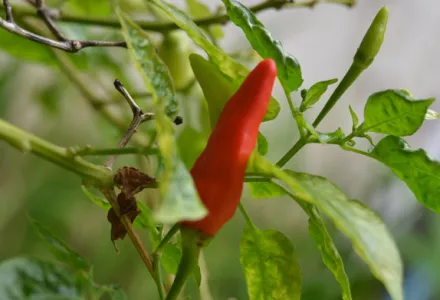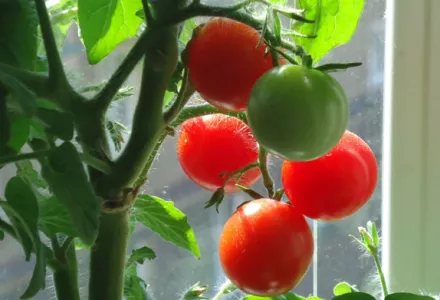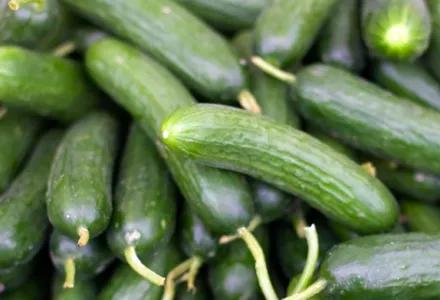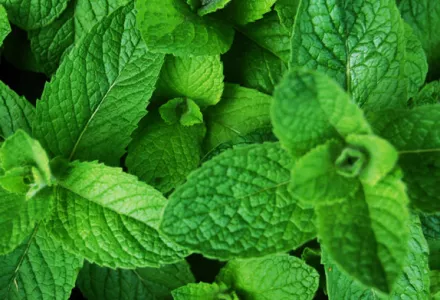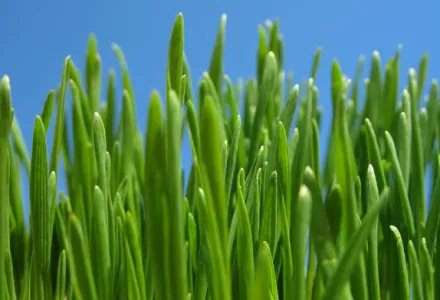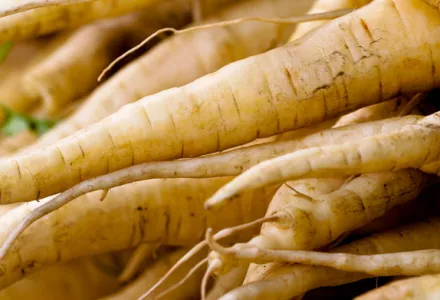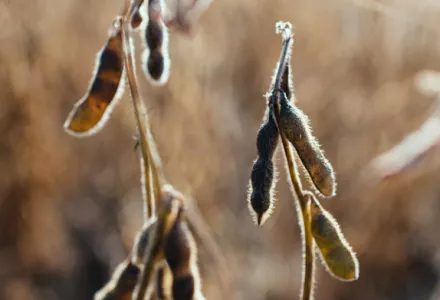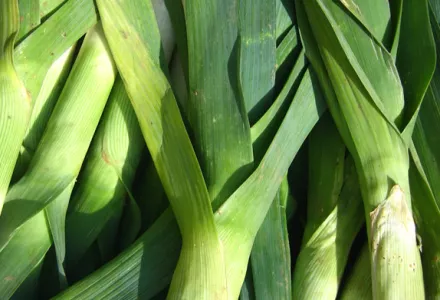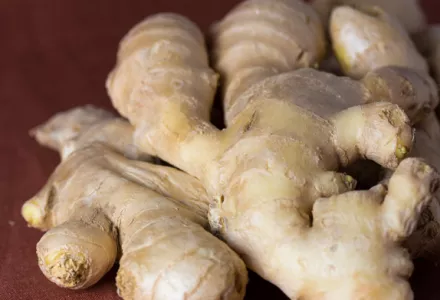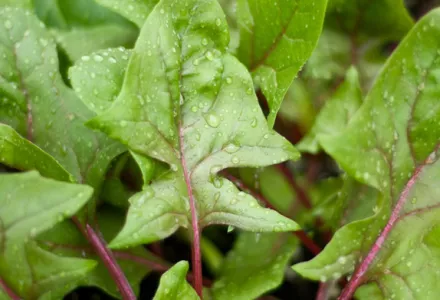Ah, the stinking rose with its penetrating perfume. For those who might be wondering what we’re referring to, here’s a clue. It’s the pungent plant that’s reputed to ward off vampires. Garlic, of course! Long live this delicious bulb, which is packed with health benefits and is said to bring a swift end to a host of illnesses – as well as a couple of dates!
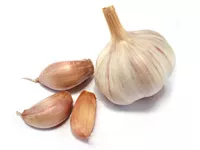
Garlic has a long history of cultivation, having been grown for a variety of uses for millennia. archaeologists have discovered clay sculptures of garlic bulbs and paintings of garlic in Egyptian tombs in El Mahasna dating from about 3200 BC, while a recently discovered Egyptian papyrus from 1500 BC recommends garlic as a cure-all for over 22 common ailments, including lack of stamina, heart disease and tumours. It’s been said that the Egyptians fed garlic to the slaves who built the pyramids to increase their strength. But garlic was a food for everyone, equally fit for a pharaoh, and Tutankhamen was sent into the afterlife with bulbs of garlic at his side.
In ancient Greece and Rome, garlic also had a great many uses – from repelling scorpions to treating dog bites and bladder infections, curing leprosy and relieving the symptoms of asthma. It was even presented as an offering to the Greek goddess Hectate. Early Greek military leaders fed garlic to their troops before battles to give them courage and inspire them to victory, and Greek Olympic athletes ate garlic to enhance their performance.
In medieval Transylvania, home of the legendary Count Dracula, garlic was found to be an effective way of warding off not only vampires, but also another blood-thirsty nocturnal visitor – mosquitoes! In the Middle ages garlic was believed to help guard against the plague and was hung in braided bunches in front doorways to prevent evil spirits from entering the home. While modern science cannot confirm garlic’s effectiveness when it comes to evil spirits, we can be sure that garlic will usually prevent a goodnight kiss at the end of a romantic date.
Ironically, then, in many cultures garlic is also considered a powerful aphrodisiac and even an organic alternative to Viagra. some say it will boost a man’s sperm count and in Palestinian tradition, a groom who wears a clove of garlic in his buttonhole is guaranteed a happy wedding night.
Malodorous trivia
The word garlic comes from the Old English garleac, meaning “spear-leek.” Dating back over 6,000 years, it is a native plant of Central asia and has long been a staple in the Mediterranean region, as well as a frequently used seasoning in asia, africa, and Europe. Garlic (allium sativum) is actually a member of the lily (Liliaceae) family and a cousin of onions, leeks, chives and shallots. The plant’s edible bulb is made up of several smaller cloves. It is a root crop, and the bulb grows under the ground. Garlic crops are harvested in mid-July and then hung in sheds. Then they reach their best in late July or early august.
Over 300 varieties of garlic are grown around the world. american garlic, with its white, papery skin and strong flavour is one of the most common varieties. Italian and Mexican garlic, both of which have pink or purple-tinged skins, are slightly milder-flavoured varieties.
Where does that garlicky aroma come from?
When garlic cells are ruptured by cutting or pressing, they release an enzyme called allinaise. This enzyme chemically changes the inherent alliin into allicin, a sulphur-containing molecule that gives off the heady, pungent aroma that is the mainstay of kitchens around the world. When garlic is consumed, those sulphurous compounds are absorbed into the bloodstream and escape through perspiration and when air is exhaled from the lungs. That’s the source of garlic breath. In people who consume massive quantities of garlic, a noticeably garlicky bodily odour can also be the result.
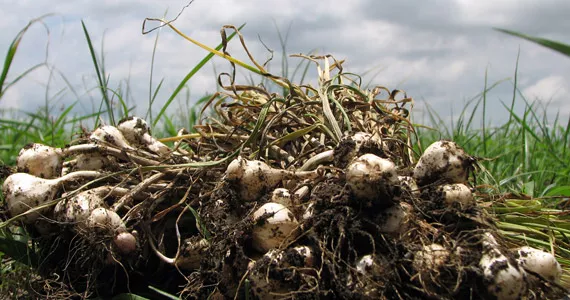
Want to get rid of the smell of garlic?
If you’re a garlic lover, first of all it’s wise to surround yourself with others who also enjoy garlic. Otherwise, try munching on parsley to neutralize the lingering garlicky smell on your breath. Getting rid of the smell of garlic from your hands after peeling and chopping is much easier. Rinse your hands and then simply rub your clean hands on a metallic surface such as a kitchen sink. It works like magic!
Brimming with health benefits
Aside from the wonderful flavour it can give to your cooking, the ‘stinking Rose’ has been used for its remarkable medicinal properties throughout the ages. In Egypt, it was revered as a physical strength enhancer; in ancient Greece, its laxative properties were praised. It was even nicknamed “Russian penicillin” due to its effectiveness as a topical antibiotic for use on battle wounds. This is more than just superstition. Modern scientific research has confirmed what our ancestors believed about the health benefits of garlic. In 1858, Louis Pasteur documented that garlic kills bacteria, with one millilitre of raw garlic juice proving as effective as 60 milligrams of penicillin. During World War II, when penicillin and sulfa drugs were in short supply, the British and Russian armies used diluted garlic solution as an antiseptic to disinfect open wounds and prevent gangrene. Though not completely understood at the time, contemporary research has confirmed that garlic’s healing powers come from the hundreds of volatile sulphur compounds that are found in the vegetable, including allicin, (which gives garlic its distinctive odour), alliin, cycroalliin, and diallyl disulphide. The allicin in raw, crushed garlic has been shown to kill 23 types of bacteria, including salmonella and staphylococcus. Heated garlic gives off another compound, diallyl disulphide oxide, which has been shown to lower serum cholesterol by preventing clotting in the arteries.
The vitamins present in garlic including A, B, and C help the body fight carcinogens and get rid of toxins, and they may even help prevent certain types of cancer, such as stomach cancer. Garlic’s sulphurous compounds help regulate blood sugar, stimulate and detoxify the liver and stimulate circulation and the nervous system.
Growing garlic at home
Growing your own garlic at home can be fun and relatively easy, even if you’re not blessed with green fingers. a new garlic plant will grow from each clove, and each new plant will produce a new bulb, in turn containing up to twenty cloves. This growth cycle makes garlic self- sustaining. Garlic’s unique fungicidal and pesticide properties can also help keep neighbouring plants healthy.
Garlic typically enjoys a Mediterranean climate, but can be grown in cooler climates as well. Choose a spot in the garden where the soil is not too damp and there is plenty of sunshine. Plant the cloves individually, pointing upwards and about an inch under the surface. Cloves should be planted about 4 inches apart, with rows about 18 inches apart. The best time to plant garlic in the Usa or Europe is early spring or late autumn/early winter. although knowing when to pick garlic is not an exact science, a good rule of thumb is to harvest your garlic when half the leaves around the base of the bulb are green and the other half are turning brown and dying back. after harvesting, take your garlic inside straight away, brush off any dirt, and store in a cool, dry place.
Garlic has an amazing array of nutritional and medicinal applications, and it continues to provide health benefits for many to this day. so grab a bulb and enjoy nature’s oldest super-food: garlic.
Recipe: Garlic tea for coughs
Garlic can be used in almost any meal. But if you have a persistent cough, this soup or tea recipe is the one for you.
Cut a bulb of garlic into quarters and add two litres of water. Cook on a low heat for at least one hour. Strain and sip slowly.
Believe it or not, this warm garlic tea has a very pleasant taste ...but don’t forget to buy yourself some parsley. To your very good health!

